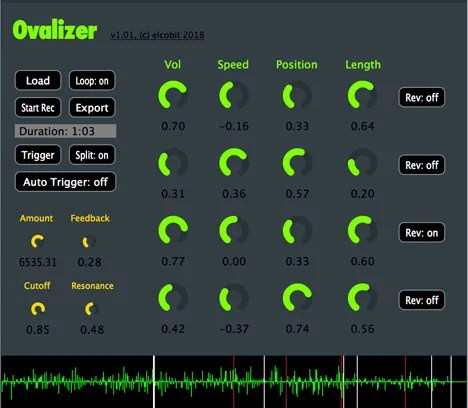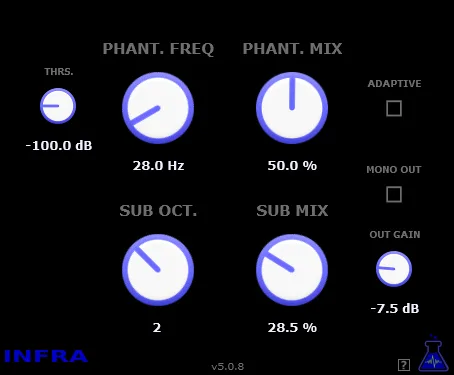In modern music production, the search for unique and unexpected sounds is a key element in creating original and memorable tracks. One source of such experimental textures is the sounds of digital glitches, which were previously a random result of damaged media, such as CDs. Now, thanks to plugins that emulate such artifacts, every musician or sound designer can consciously integrate the aesthetics of digital glitch into their work.
Ovalizer: Digital Glitch Emulator
Introducing Ovalizer from Elcobit – a VST plugin for macOS, designed specifically to reproduce and manipulate digital glitches, resembling effects caused by damaged CDs. Forget about the need to physically damage your favorite CDs to get interesting microloops! Ovalizer allows you to achieve similar results in a controlled digital environment, opening up new horizons for remixes, sound design, and experimental music.
What is a Digital Glitch?
A digital glitch in the context of sound is short-term, unexpected distortions or repetitions of audio that occur as a result of errors when reading data from digital media or during digital processing. These can be sharp interruptions, looping of small fragments, pitch changes, or noise. The aesthetics of glitch have become popular in many genres of electronic music, such as glitch-hop, ambient, and IDM, adding futurism and unpredictability to tracks.
Ovalizer Features
Ovalizer doesn’t just imitate glitches; it provides a powerful toolkit for deep work with sound based on these artifacts. The plugin can work with both live audio and pre-loaded WAV files, making it a versatile tool for studio work and performances.
Key features of Ovalizer:
- CD Damage Emulation: Reproduces the characteristic sounds that occur when reading data from scratched or damaged CDs, creating unique microloops and stutters.
- Flexible Input Signal: Works with both real-time audio and loaded WAV audio files, providing maximum flexibility in use.
- Polyphony: Up to four independent “voices” can work simultaneously, allowing you to create complex textures and layering of glitch effects.
- Deformation and Manipulation: Provides a wide range of parameters to change, adjust, and “deform” the generated glitch fragments, opening up endless possibilities for sound design.
- Canonical Layering: Voices can be layered according to certain rules, which allows you to create harmonious or rhythmically interesting combinations of glitches.
- Random Reassignment: The function of random parameter changes or the selection of new fragments for processing with a single press of the “rescoped” button adds an element of surprise and helps you quickly find interesting sound ideas.
- Granular Basis: When “restarting” the engine, the plugin automatically cuts granular fragments from the original audio. These fragments are then processed and looped, the cycle duration can vary from a few milliseconds to the full length of the source file.
- Innovative Workflow: A unique approach to creating remixes and soundscapes, which differs from traditional audio processing methods.
How to use Ovalizer?
Using Ovalizer is intuitive, despite its powerful capabilities. Simply load the plugin into your VST-compatible host (DAW) on macOS. Next, you can either direct audio to it from another track or instrument, or upload a WAV file directly into the plugin’s interface. Then experiment with different parameters, controlling how the glitch emulation occurs, how granular fragments are cut and looped, and how the four voices interact with each other. Random reassignment can be a great starting point for exploring new sound territories.
Ovalizer is more than just an effect; it’s a tool for creatively rethinking audio, allowing you to transform familiar sounds into something completely new and unexpected. It is ideal for electronic musicians, sound designers, and producers who are looking for ways to add the modern sound of digital artifacts to their tracks.
Download Ovalizer today and start experimenting with the world of digital glitches! Discover how diverse and musical “errors” can be.



